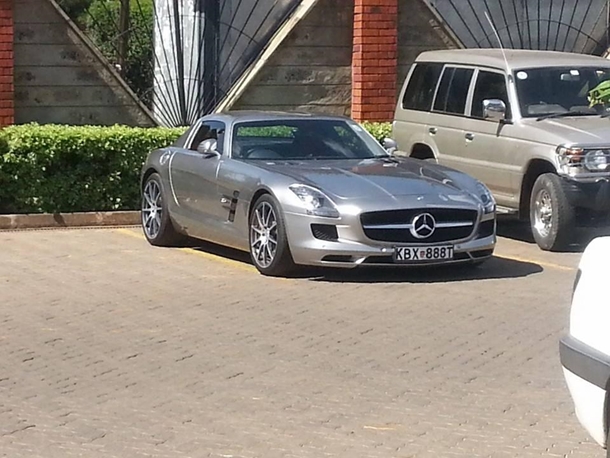An estimated 35 per cent of road traffic deaths in Nairobi occur within 20 metres of matatu stages, a new study has shown, highlighting infrastructure design flaws around these sites as well as rogue behaviour by drivers and lack of safety consciousness among pedestrians.
“This staggering number is a call for action,” the report from a pilot study on transport safety in Nairobi says.
“Developing a better understanding of how to regulate and enforce matatu flows, and driver and pedestrian behaviour, while at the same time improving the infrastructure at these sites will be required to guide policy action”.
The study was conducted in collaboration with the National Transport Safety Authority (NTSA) and the National Police Service with funding from donor agencies including the World Bank, the European Union and the UK Department for International Development (DFID).
A spot check of the matatu termini in Nairobi shows that many pickup and drop-off points around the city lack safety features such as designated crossing points or protected sidewalks — exposing pedestrians to harm or even death.
Most highways in the country do not have footbridges — exposing pedestrians to the risk of fatal accidents.
The flow of public service vehicles (PSVs) is also slapdash as crew jostle to drop off and pickup passengers — adding to the woes of pedestrians who make up a massive 71 per cent of road traffic accident deaths reported by police between 2012 and 2018.
With walking as the main mode of transport in Nairobi, especially among the poor, the findings shift focus to improving safety features at the matatu termini and city roads.
It is only recently that the government stepped-up the creation of zebra-crossing and traffic lights and installation of footbridges on key roads, including Thika Road.
The NTSA has also been fitting a series of safety panels on major roads around the city in an attempt to force jaywalkers to use areas designated for road crossing, including footbridges on the busy roads.
The barriers have been erected on sections of the city’s Airport North Road and Mombasa Road and Waiyaki Way in Nairobi although the NTSA aims to cover more high-risk spots along these roads.
The new study revealed that in Nairobi traffic accident deaths and injuries are concentrated between 5am and 8am and between 5pm and 11pm, representing 53 per cent (deaths) and 50 per cent (injuries) of the total.
pedestrian deaths
The deadliest times for pedestrians are at night between 7pm and midnight when 41 per cent of pedestrian deaths occur.
“Implicating factors that need to be investigated further could include poor visibility, drunk driving and speed. Cross-examining location and time of crashes could help develop a strategy for remedying street lighting and enforcement of speed and alcohol regulation” the study report urged.
The survey further showed that while crashes occur in 1,400 different locations across the city, 200 locations represent 55 per cent of the deaths and 53 per cent.
“These locations represent 14 per cent of all locations where severe crashes have occurred in the six years under review. This high concentration of crashes and negative crash outcomes is an opportunity to prioritise these locations for policy action and substantially remedy the loss of life in the city” it said.
Pedestrian deaths remain a concern countrywide with latest data by NTSA showing that 1,390 cases were registered in 2019, marking a 15.4 per cent increase from the previous year. This was the single highest number of deaths by type of victims.
But apart from pedestrian deaths, authorities are also concerned by the sharp rise in deaths of motorcyclists.
The latest statistics show the low-cost motorcycles now kill more people than vehicles with 1,421 riders and pillion passengers dying in 2019 compared to 1,049 drivers and passengers who lost their lives from motor vehicle-related deaths.
Last year experienced a 41 per cent surge where 348 pillion passenger deaths occurred compared to 247 while reported in 2018, according to NTSA records.
tidy earnings
Rider deaths rose by 22.7 per cent to stand at 725 from 591 in 2018.
The year also saw 836 pillion passengers suffer serious injuries up 67.5 per cent from 2018’s reported 499 with 1,391 riders sustaining serious injuries, being a 92.1 per cent rise compared to 698 reported in 2018.
The convenience of this mode of transport coupled with favourable import terms has seen an upsurge in the number of units in the country. The tidy earnings from the motorcycle taxi business have also contributed to the rise in purchases, especially for use by unemployed youths. Unfortunately, this has compromised safety because most of the youths learn on-the-job.
This has opened the unrecognised sector to many challenges from reckless road behaviour that is now blamed for rising medical costs on the treatment of motorcycle accident victims.
Spooked by the high number of motorcycle accidents, the NTSA and regional authorities have been enforcing the Motorcycle Regulations 2015 in an attempt to tame rogue cyclists.
The regulations prohibit riders from carrying more than one passenger on a motorcycle
Additionally, riders are required to have valid documentation, ensure that they and their passengers wear reflector jackets and helmets, and make sure that their headlights are on at all times.
The law also applies to owners of motorcycles who are required to, among other things, ensure that the riders working for them have documents such as licences, the motorcycles are roadworthy and are insured, and they have two helmets and two reflector jackets.
Dealers are also now required to issue two helmets and two reflector jackets for every motorcycle that they sell.
The NTSA is mandated to revoke dealership licences of non-compliant vendors.
SOURCE: nation.co.ke





![Here are some of the best tuned cars in kenya by state of the art garages [PHOTOS]](../../../blog/wp-content/uploads/2013/11/29402_10151301757042065_340470732_n-e1384498044289.jpg)

![Top 20 Used Cars to Avoid Buying in Kenya – [PHOTOS]](../../../blog/wp-content/uploads/2013/11/top-used-unreliable-cars-to-avoid2-100x70.jpg)



